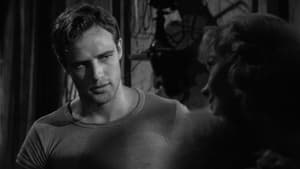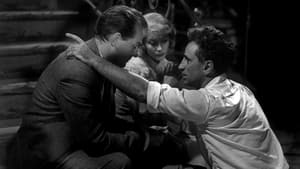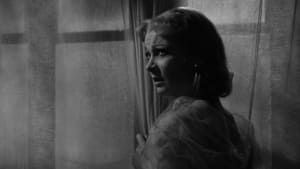Contact: [email protected]
Video Sources 0 Views

A Streetcar Named Desire Colorized 1951: The Surprising Impact of Colorization
Synopsis
[ez-toc]






Introduction
In the vast tapestry of cinema, there exists a delicate dance between preserving the sacredness of old films and injecting them with a new lease on life. “A Streetcar Named Desire Colorized 1951” steps into this realm, daring to reimagine a classic through the lens of colorization. This article embarks on a journey through the making of the film, explores its plot and characters, delves into the impact of colorization, and navigates the controversies surrounding this practice.
Read Media File Transfer Agreement: Terms and Conditions
Read FAQ
The Making of A Streetcar Named Desire Colorized
Directed by the visionary Elia Kazan, “A Streetcar Named Desire Colorized” originated as a groundbreaking play by Tennessee Williams that took Broadway by storm. The transition from stage to screen, often a precarious feat, was navigated with finesse by Kazan. The film’s key elements were carefully woven together, capturing the essence of the Southern Gothic tale and elevating it to cinematic brilliance. The star-studded cast featuring Vivien Leigh as Blanche DuBois, Marlon Brando as Stanley Kowalski, Kim Hunter as Stella, and Karl Malden as Mitch, played an integral role in bringing the characters to life.
The Broadway production had already garnered widespread acclaim, but the challenge lay in translating the intimacy of the stage to the expansiveness of the silver screen. Kazan’s directorial prowess, coupled with the raw talent of the cast, successfully preserved the intensity and emotional depth of the play.
Exploring the Plot and Characters
Set against the sultry backdrop of New Orleans, “A Streetcar Named Desire” Colorized unfolds a tragic tale of desire, deception, and the unraveling of a fragile mind. Blanche DuBois, brilliantly portrayed by Vivien Leigh, arrives at her sister Stella’s home, seeking refuge from a troubled past. The clash between Blanche and her brother-in-law Stanley Kowalski, played with visceral intensity by Marlon Brando, sets the stage for a gripping narrative.
The characters, each grappling with their own demons, create a rich tapestry of Southern Gothic drama. Blanche’s descent into madness, Stanley’s primal masculinity, Stella’s conflicted loyalties, and Mitch’s well-intentioned yet flawed pursuit of love, form the backbone of the story. Their interactions are a dance of power, vulnerability, and tragic inevitability, showcasing the timeless relevance of the human condition.
The Cinematic World of New Orleans: Setting and Visuals
New Orleans, with its vibrant culture, distinct architecture, and a hint of decadence, becomes a character in itself. Kazan’s decision to film on location adds an authenticity that permeates every frame. The city’s sultry atmosphere, steeped in history and mystique, enhances the narrative, enveloping the characters and the audience in its seductive embrace.
The visual style and cinematography techniques employed by Kazan contribute to the film’s immersive experience. The play of light and shadow, coupled with carefully crafted compositions, evoke a sense of foreboding and beauty. The decision to shoot on location, rather than relying on studio sets, adds a layer of realism that elevates the film beyond a mere adaptation; it becomes a cinematic journey into the heart of the Deep South.
From Stage to Screen: Changes in the Film Adaptation
Adapting a play for the screen often involves making choices that cater to the medium’s unique demands. “A Streetcar Named Desire Colorized” is no exception. While maintaining the core of Williams’ masterpiece, Kazan made some key changes to enhance the cinematic experience. These alterations range from subtle shifts in dialogue to the restructuring of certain scenes, all with the aim of intensifying the visual and emotional impact.
One notable change is the opening sequence, where the film introduces Blanche’s arrival in New Orleans before delving into the backstory. This adjustment allows for a more gradual immersion into the narrative, inviting the audience to witness the unfolding drama in real-time. While purists may raise an eyebrow at such deviations, they underscore the director’s commitment to translating the essence of the play into a compelling cinematic experience.
The Impact of Colorization on A Streetcar Named Desire Colorized
The decision to colorize an old film is often met with skepticism. However, “A Streetcar Named Desire Colorized 1951” takes a bold step in reimagining this classic in vibrant hues. The impact of colorization on the film is multifaceted, influencing not only the visual aesthetic but also the emotional resonance of the narrative.
The addition of color breathes new life into the streets of New Orleans, transforming the film into a visual spectacle. The vibrant hues of Blanche’s dresses, the neon lights of the French Quarter, and the warmth of the southern sun add layers of meaning and symbolism to the story. The music score, once limited by the monochromatic palette, now resonates with a newfound richness, complementing the emotional beats of the characters.
While purists may argue that colorization disrupts the intended atmosphere of the film, proponents contend that it provides a fresh perspective, inviting a new generation of viewers to engage with a timeless masterpiece. The clash between tradition and innovation is palpable, but it raises important questions about the malleability of art and the evolving nature of cinematic appreciation.
Reception and Legacy
Upon its initial release, “A Streetcar Named Desire Colorized” received critical acclaim and multiple Oscar nominations. Its legacy endured, solidifying its place in the National Film Registry, a testament to its cultural and historical significance. The film’s ability to resonate across generations speaks to its enduring quality and the universal themes it explores.
The decision to colorize the film in 1951 adds an intriguing chapter to its legacy. While purists may question the necessity of such a modification, the film’s inclusion in the National Film Registry acknowledges its ongoing impact and cultural relevance. It becomes not just a relic of the past but a living, breathing work of art that continues to captivate audiences in new and unexpected ways.
Public Opinion: Colorized vs. Original Black and White
As with any artistic endeavor, public opinion on the colorized version of “A Streetcar Named Desire Colorized” is divided. User reviews offer a spectrum of perspectives, reflecting the diverse ways in which individuals connect with cinematic masterpieces. Some applaud the colorization for revitalizing the film, appreciating the heightened emotional resonance and the opportunity to experience the story in a fresh light. Others, however, argue that the original black-and-white version captures the intended atmosphere more authentically, allowing for a more immersive engagement with the characters and their world.
The clash of opinions mirrors the ongoing debate within the film community regarding the sanctity of the director’s original vision versus the possibilities presented by technological advancements. It invites audiences to grapple with the subjective nature of film appreciation and the ever-evolving ways in which we consume and interpret visual storytelling.
The Controversy of Colorization in Film Preservation
The controversy surrounding colorization in film preservation is not a new phenomenon. The debate revolves around the ethical and artistic implications of altering the visual DNA of a classic. On one side of the spectrum are those who view colorization as a form of sacrilege, an act that compromises the director’s original vision and dilutes the authenticity of the film. They argue that black-and-white cinematography is an essential component of the cinematic language, contributing to the mood, atmosphere, and narrative impact.
On the opposing side are proponents of colorization who see it as a means of breathing new life into old films, making them more accessible to contemporary audiences. They argue that colorization can enhance the emotional depth of a story, drawing viewers into the narrative in ways that monochrome visuals might not. Additionally, colorization has the potential to attract younger audiences who may find black-and-white films less engaging or relatable.
The controversy surrounding colorization extends beyond individual films to encompass broader questions about the preservation of film heritage. As technology advances, the delicate balance between maintaining the integrity of original works and embracing innovative approaches becomes increasingly complex. The debate prompts reflection on the responsibility of custodians of cinematic history to navigate these challenges with sensitivity and foresight.
Preserving Film Heritage: Restorations and Digital Remastering
As the debate over colorization rages on, the importance of preserving film heritage remains paramount. Film restoration and digital remastering represent crucial tools in this ongoing effort. These processes focus on enhancing the quality of old movies, repairing damage caused by time, and ensuring that future generations can experience cinematic classics in their intended form.
Film restoration involves meticulous work, from cleaning and repairing physical film elements to improving audio quality. The goal is to retain the authenticity of the original work while mitigating the effects of aging. Digital remastering takes this a step further, utilizing modern technology to enhance visual and audio elements. These practices acknowledge the historical value of old films and the need to safeguard them for posterity.
While purists may argue that any alteration, including colorization, undermines the authenticity of the original work, the broader conversation around film preservation recognizes that technological advancements can coexist with a commitment to maintaining the integrity of cinematic history. Striking a delicate balance ensures that old films are not consigned to obscurity but are instead celebrated and enjoyed by future generations.
Conclusion
As we reflect on “A Streetcar Named Desire Colorized 1951,” the surprising impact of colorization on this cinematic classic prompts a broader exploration of the relationship between tradition and innovation in the world of film. Encouraging viewers to experience both the colorized and original black-and-white versions invites a nuanced appreciation for the artistic choices made by directors and the transformative potential of technology.
The clash of opinions surrounding colorization reflects the diversity of perspectives within the film community and among audiences. It highlights the subjective nature of film appreciation and the personal connections viewers forge with cinematic masterpieces. As we navigate the controversy surrounding colorization, it becomes clear that the preservation of film heritage requires a delicate dance between honoring the past and embracing the possibilities of the future.
In the ever-evolving landscape of cinema, where old movies serve as both time capsules and sources of inspiration, the surprising impact of colorization on “A Streetcar Named Desire Colorized” challenges us to reevaluate our preconceptions. It encourages us to approach cinematic classics with open minds, recognizing that while preserving the purity of film history is crucial, there is also room for exploration and reinterpretation.
In conclusion, “A Streetcar Named Desire Colorized 1951” stands as a testament to the enduring power of storytelling and the dynamic nature of cinematic art. As we celebrate the rich tapestry of old films, let us find a harmonious balance between preserving their historical significance and embracing the transformative potential of technological advancements. In doing so, we ensure that the magic of classic cinema continues to captivate and inspire generations to come.




















